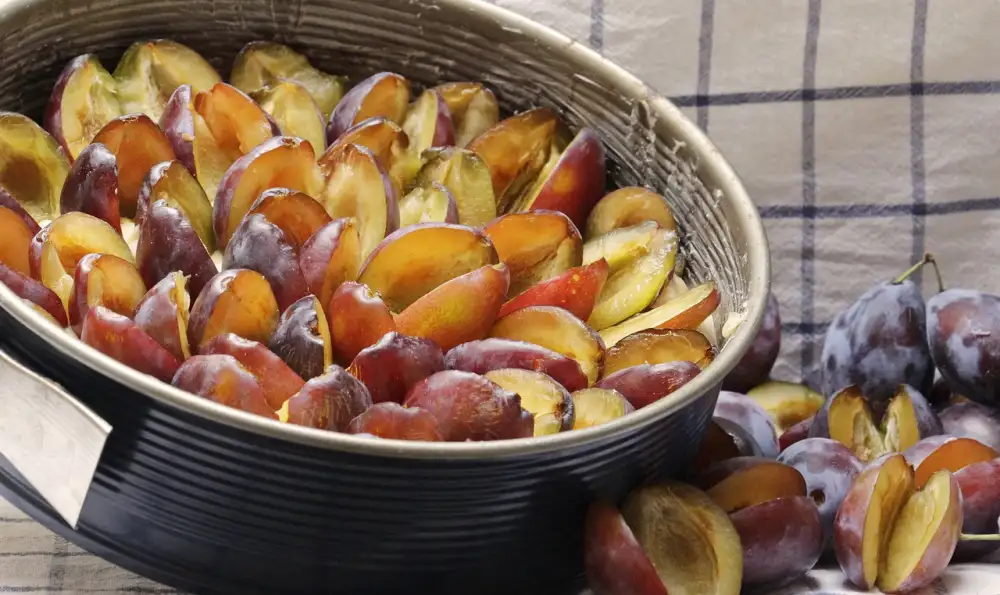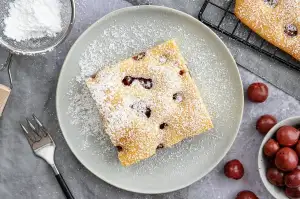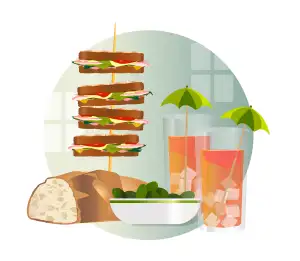Master the Art of Batter Making: A Foolproof Recipe for Perfectly Crispy Delights

Introduction to Batter Recipe
Batter is a versatile mixture that forms the foundation of many delicious dishes. Whether you're craving crispy fried chicken, golden fish and chips, or fluffy pancakes, mastering the art of batter making is essential. A good batter can elevate your culinary creations to new heights, providing a satisfying crunch and enhancing flavors. In this article, we will guide you through a foolproof recipe for perfectly crispy delights. Get ready to unlock the secrets of batter making and take your cooking skills to the next level!
Importance of a Good Batter
The importance of a good batter cannot be overstated when it comes to creating perfectly crispy delights. A well-made batter is the foundation of any fried or baked dish, providing a deliciously golden and crunchy coating that enhances the flavors and textures of the ingredients. It acts as a protective barrier, sealing in moisture and preventing the food from becoming dry during cooking. A good batter also adds depth and complexity to the overall taste experience, elevating even simple ingredients to new heights. Whether you're making fish and chips, onion rings, or fritters, a good batter is key to achieving that satisfying crunch that keeps you coming back for more. So, let's dive into the basic ingredients and step-by-step instructions for mastering the art of batter making!
Basic Ingredients for Batter
Basic Ingredients for Batter:
To master the art of batter making, it is essential to start with the right ingredients. The basic components of a batter include flour, liquid, and a leavening agent.
Flour forms the base of the batter and provides structure. All-purpose flour is commonly used, but you can also experiment with other types like rice flour or cornstarch for a lighter texture.
The liquid component can vary depending on the desired consistency. Common choices include water, milk, beer, or even carbonated drinks. Each adds its own unique flavor profile to the final dish.
A leavening agent such as baking powder or yeast is crucial for achieving a light and airy texture in your batter. Baking powder is preferred for quick batters as it activates immediately upon contact with liquid.
Other optional ingredients can be added to enhance flavor and texture. These may include salt, spices, herbs, eggs, or even grated cheese.
By understanding these basic ingredients and their roles in creating a successful batter, you are ready to move on to the next step: mastering the technique of combining them in perfect harmony.
Step-by-Step Instructions for Making Batter
Step-by-Step Instructions for Making Batter:
1. Start by combining the dry ingredients in a mixing bowl. This typically includes flour, salt, and any desired seasonings such as garlic powder or paprika.
2. In a separate bowl, whisk together the wet ingredients. This usually consists of eggs and a liquid component like milk or water. The ratio of wet to dry ingredients will depend on the desired consistency of your batter.
3. Slowly pour the wet mixture into the dry mixture while whisking continuously. Be sure to incorporate all the ingredients thoroughly to avoid lumps.
4. If the batter appears too thick, gradually add more liquid until you achieve a smooth and pourable consistency. On the other hand, if it seems too thin, add small amounts of flour until it thickens up slightly.
5. Allow the batter to rest for about 10-15 minutes before using it. This resting time allows the gluten in the flour to relax and results in a lighter texture.
6. Heat oil in a deep fryer or large pot to the desired temperature for frying (usually around 350°F/175°C). Make sure there is enough oil to fully submerge whatever you're coating with batter.
7. Dip your chosen food item into the batter, ensuring that it is evenly coated on all sides.
8. Gently place the battered item into the hot oil, being careful not to overcrowd the pan which can lower the temperature and result in soggy food.
9. Fry until golden brown and crispy, turning occasionally for even cooking.
10. Once cooked, remove from oil using tongs or a slotted spoon and transfer to a paper towel-lined plate to drain excess oil.
11. Serve immediately while still hot and enjoy your perfectly crispy delights!
By following these step-by-step instructions, you'll be well on your way to mastering the art of batter making!
Tips for Perfecting Your Batter
To perfect your batter and achieve the crispiest delights, here are some essential tips:
1. Temperature control: Ensure all ingredients are at room temperature before mixing. Cold ingredients can result in a thicker batter, while warm ingredients may lead to a runny consistency.
2. Consistency matters: Achieving the right consistency is crucial. The batter should be smooth and pourable, but not too thin or too thick. Adjust the amount of liquid or flour accordingly to achieve the desired consistency.
3. Resting time: Letting the batter rest for about 15-30 minutes allows the gluten in the flour to relax, resulting in a lighter and crispier texture.
4. Avoid overmixing: Be gentle when combining the ingredients to prevent overmixing, which can activate gluten and make the batter tough.
5. Proper frying technique: Use a deep-fry thermometer to maintain an optimal frying temperature (around 350°F/180°C). Fry small batches at a time to avoid overcrowding and ensure even cooking.
6. Drain excess oil: After frying, place the cooked delights on a wire rack or paper towels to drain any excess oil and maintain their crispy texture.
7. Serve immediately: To fully enjoy the crispy goodness, serve your delights immediately after frying while they are still hot and fresh.
By following these tips, you'll be well on your way to mastering the art of batter making and creating perfectly crispy delights every time!
Variations and Enhancements for Different Dishes
Variations and Enhancements for Different Dishes:
Once you have mastered the basic batter recipe, you can experiment with different variations and enhancements to create a wide range of delicious dishes.
For a savory twist, try adding herbs and spices such as garlic powder, paprika, or cayenne pepper to the batter. This will give your fried delights an extra kick of flavor. You can also mix in grated cheese or finely chopped onions for added texture and taste.
If you prefer a sweeter option, consider incorporating ingredients like cinnamon or nutmeg into your batter. This works particularly well for desserts such as fritters or pancakes. For a tropical twist, try adding shredded coconut or mashed bananas to the batter.
To enhance the visual appeal of your dishes, you can experiment with different colors by using natural food coloring agents like beetroot juice or turmeric powder. This will not only make your creations visually appealing but also add subtle flavors.
Furthermore, you can explore various coatings to give your battered delights an extra crunch. Dip them in breadcrumbs, crushed cornflakes, or even crushed nuts before frying to create a unique texture and taste.
Remember that different dishes require different consistencies of batter. For lighter options like tempura or onion rings, use a thinner batter by adding more liquid. For heartier dishes like fish and chips, opt for a thicker batter by reducing the amount of liquid used.
By experimenting with these variations and enhancements, you can elevate your battered creations to new heights and impress your friends and family with your culinary skills. So go ahead and unleash your creativity in the kitchen!
Troubleshooting Common Batter Issues
Troubleshooting Common Batter Issues:
Even with the most foolproof recipe, there can still be some common issues that arise when making batter. Here are a few troubleshooting tips to help you overcome these challenges and achieve perfectly crispy delights every time.
1. Thin or Runny Batter: If your batter is too thin or runny, it may not adhere properly to the food item and result in a soggy texture. To fix this, add a little more flour gradually until you achieve a thicker consistency.
2. Thick or Lumpy Batter: On the other hand, if your batter is too thick or lumpy, it will create a heavy coating that won't crisp up well. Simply add small amounts of liquid (water, milk, or beer) and whisk until you reach a smooth and pourable consistency.
3. Uneven Coating: Sometimes, you may find that your batter doesn't coat the food evenly, leaving patches of bare spots. To avoid this issue, make sure to thoroughly coat each piece by dipping it into the batter and gently shaking off any excess before frying.
4. Greasy Results: If your fried delights turn out greasy instead of crispy, it could be due to oil temperature being too low. Ensure that your oil is hot enough (around 350°F/180°C) before adding the battered items. Additionally, avoid overcrowding the pan as it can lower the oil temperature and lead to greasiness.
5. Soggy Leftovers: While freshly fried foods are at their prime, leftovers can sometimes lose their crispiness overnight. To revive them, simply reheat them in an oven at a high temperature for a few minutes to restore their crunch.
By keeping these troubleshooting tips in mind, you'll be able to tackle any issues that may arise during the batter-making process and achieve consistently delicious results every time you fry up your favorite treats!
Conclusion: Mastering the Art of Batter Making
In conclusion, mastering the art of batter making is a skill that can elevate your culinary creations to new heights. With the right ingredients, techniques, and tips, you can achieve perfectly crispy delights every time. Remember to use a good quality flour and consider adding some cornstarch for extra crispiness. Experiment with different liquids like beer or sparkling water to enhance the flavor and texture of your batter. Don't be afraid to try out variations and enhancements for different dishes, as this will keep your cooking exciting and versatile. And if you encounter any issues along the way, refer back to our troubleshooting guide for quick solutions. So go ahead, unleash your creativity in the kitchen and become a master of batter making!
Published: 15. 11. 2023
Category: Food



